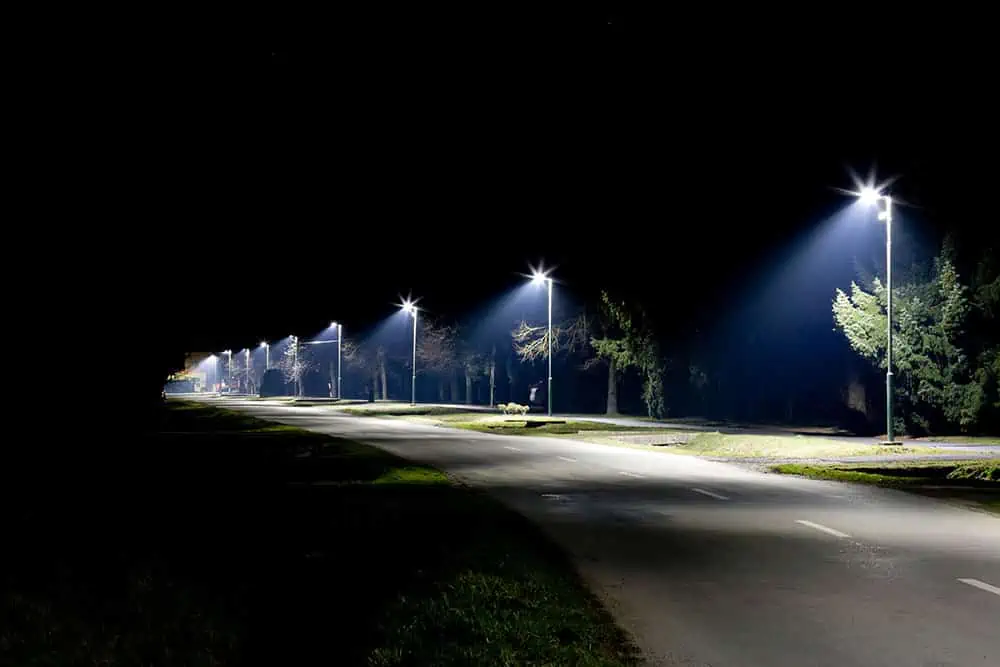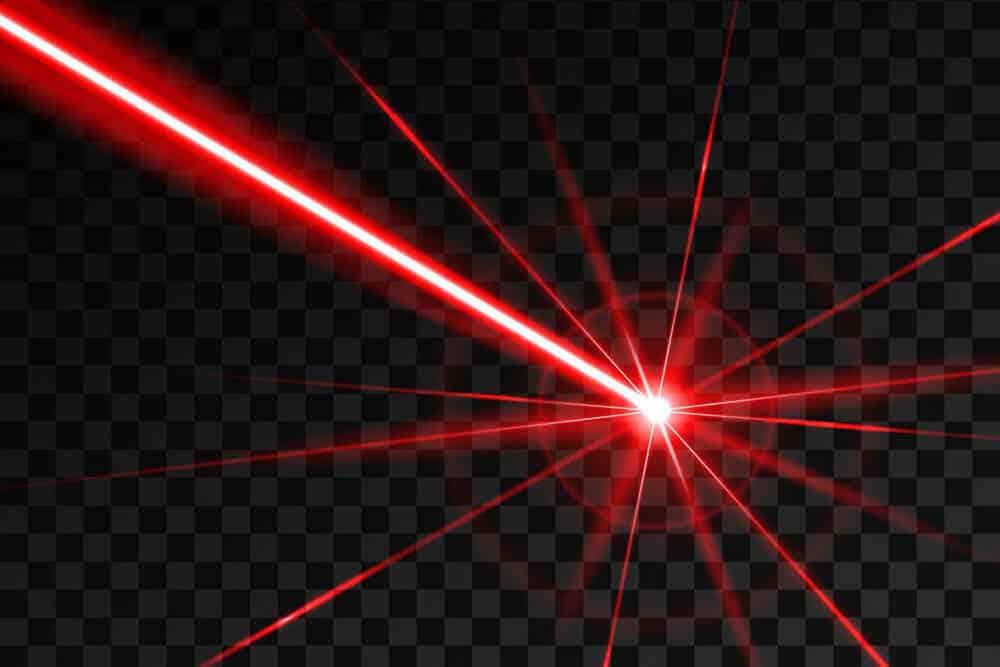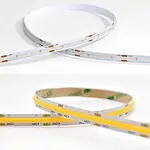Light rays are the path through which energy moves concerning a specific point. Lights generally travel in straight lines and are always parallel to each other. Lasers and LEDs are two significant sections of light.
The laser shows resonant effects and indicates coherent electromagnetic fields in the same pathway. However, lasers are helpful in optical disc drives, DNA sequencing, and many more.
Lasers move from higher-energy orbits to low ones after being stimulated by high-energy electrons. It works prominently like standard light beams and shows several health benefits, like preventing blood loss from the blood vessels.
LED is a semiconductor appliance when charged with electrical current, emits light. These are much more efficient in providing visible lights with longer spans and durability. These lighting fixtures are applicable for installation in both indoor and outdoor spaces.
LED Light Explained
They emit photon energy after the electrons combine with the electron holes. LED lights are much more efficient in energy emission than incandescent lamps and some fluorescent lamps.
The efficiency of commercial LED lamps is 200 lumen per watt (Lm/W). Hence, its lifespan is much longer than fluorescent bulbs. An electronic circuit is required for the current flow and works predominantly with LED chips. LEDs can warm up quickly and don’t reduce their life expectancy. However, the light output of the LEDs lessens with time.
The microchip is the main element of LEDs that initiates the visibility of the light. Electroluminescence is the principle on which LEDs work. Nonetheless, the current carries charges that combine at the intersection point and release photons. The LED Chip and the Driver are the main components of a LED light.
For more information, you can read Advantages and Disadvantages of LED Lighting.
Laser Light Explained
Laser light is the narrow beam of light emitted from a laser. It’s one of the most efficient and helpful lighting fixtures in technological facets. The short word ‘Laser’ stands for Light Amplification by Stimulated Emission of Radiation. The laser is monochromatic, and the beams are parallel and don’t stand out prominently for a long distance.
The laser consists of a flat and a curved mirror. The curvatures lead the narrow beam to obtain a perfect radius and revolve in a circular motion without compromising the width of the radius with each round. The energy loss in the resonator’s circular motion hampers its optical power.
Laser beams are efficient in figuring out a definite spot to achieve irradiance. However, it doesn’t diverge to a wide area. Hence the concentration of the rays is low. The polarized wave of the laser is acquired at a particular frequency, indicating the beams’ longitudinal coherence.
LED Vs. Laser- Key Differences
- LED lights have scattering light rays, which means that the light rays spread as they travel farther from the light source. Lasers have a straight beam that travels in a straight line. Lasers don’t scatter. LEDs generate a broad band of wavelengths, while lasers have a single-band wavelength.
- LED rays travel slower than laser rays. This means that LEDs respond slower than lasers.
- LED rays are safe for the naked eye. On the contrary, lasers can leave permanent damage to the naked eye. Humans need to equip with special eye-protective gear when working with lasers.
- The intensity of LED light is far less than lasers. That makes it possible for humans to look at an LED bulb with their naked eyes for a few seconds without damaging the eyes permanently. Even for 3 seconds or more, looking at a laser source can permanently damage the eyes.
- The conversion efficiency of LEDs is very lower as compared to lasers. Lasers can convert electricity to light up to 70%, while LEDs can only convert up to 10% or perhaps 20%.
- Owing to low manufacturing costs and easy manufacturing processes, LEDs are cheaper than lasers.
- Electricity consumption by LED is very less than by laser. Certain lasers can pierce or cut down metal sheets, which demands heavy electricity consumption. LEDs are not designed to consume much electricity.

Applications
LED
- Indoor Areas
LEDs are one of the most convenient alternatives to fluorescent bulbs. They contain the harmless chemical mercury, making LED lights an irreplaceable option. In the living room, LEDs are used to provide a bright aura.
On the other hand, some also prefer a dimmer atmosphere in the same place. So the planner has to conceptualize the area consequently so that the user can change the lighting of the sites according to his mood.
In the kitchen, LEDs are installed for the illumined concept through a wide area for the tasks performed. However, cabinet lighting is used to accentuate a particular section. At the same time, narrow-beam lights are considered to illuminate the pantry areas or kitchen island.
In the bedroom, heavy lighting is not preferred. Dimmer or soft lighting fixtures are contemplated that reduce eye strain. That’s why cool light shades are favored in the bedroom.
- Vehicles
LEDs can be the best option if someone desires to achieve a classy look in their car. Illuminating the interior decor of the car with LED lights can inflate its importance. On the other hand, LED headlights are also one of the most popular vehicle headlamps, making the car look better and more elegant.
- Outdoor Areas
According to the exposure of the LED bulbs, they are incorporated in outdoor areas. However, it’s better to use warm-tone LEDs like 2000K-3000K for any outdoor location. The brightness won’t be too intense and will provide enough illumination to broad areas. The higher color temperatures provide a soothing effect and last longer than incandescent bulbs.
- Traffic Lights
LEDs consume less power and are much brighter than any other type of light. These features make it more efficient to capitalize on LEDs for traffic lights. Nonetheless, it’s highly durable and has more longevity. A semiconductor chip and a reflector shape the LEDs. These are fitted in a small colored lens.
- Low Distance Communication
Believe it or not, technologies such as Li-Fi make it possible to transmit data using light. LEDs can be used for low-distance communication, as the data can travel to all the areas where the light rays reach from an LED light source. But the data transfers at a slow rate, and outer interference can easily cause loss of data. The intensity of light controls the data transfer speed, though.
- Display Screens
Display screens are used in TVs, smartphones, tablets, computers, etc. In LED-based display screens, a matrix of LED is embedded on a panel, which is responsible for generating pictures on the screen. The motherboard in the display system decides the glowing color of each LED on the panel. The frequency at which these LEDs change color is represented by the refresh rate, which is measured in Hertz.
- Lighting Decoration
Whether it’s a festival, event, or business meeting, LEDs are used to decorate or light up the surroundings to match the occasion. Fairgrounds are primarily decorated with LEDs, owing to the wide color range and high efficiency. Moreover, lighting decoration using LEDs is also preferred at places of worship.
Laser
- Laser Cutting
The procedure of cutting material utilizing a laser is laser cutting. An accurate and high dimension cut is obtained through this procedure. However, the laser beams come from a nozzle to the functional materials in this process. Laser cutting is advantageous for plasma cutting and consumes less energy for chopping aluminum and steel sheets.
- Optics
Optics determine the diversion of the light beams to different media. It acts efficiently after contrasting with a laser. Optics are used in imaging implementation and thus preventing the signal misshaping of laser-based instruments.
- Photobiomodulation
Photobiomodulation is accepted as the treatment using the wavelengths of the light beams. Using red and near-infrared light wavelengths work prominently to improve blood circulation and reduce pain. Laser is used in lessening inflammation and speeding up the healing procedure.
- Engraving
Engraving metal sheets or surface treatments laser engraving is capitalized. The advanced technology of metal engraving is significant in aluminum or steel sheets. However, with this method, high-level precision of the sheets can be obtained with minimal maintenance cost.
- Spectroscopy
The compositions or quality of materials can be determined with laser spectroscopy. However, it also expressed the substances’ concentration and trace gases present in the environment. Laser spectroscopy investigates the structure of atoms and molecules associated with the atmosphere.
- Medicine
It’s pretty surprising, but lasers are used in advanced medical techniques. Laser is used in the treatment of various pathogens and also limits their invasion. In 1963 laser was used in cardiovascular surgery. However, it’s significant in the removal of malignant cells.
- Laser Beam Welding
In laser beam welding, two sheets of metals are linked using laser beams. Welding stainless steel, aluminum, or titanium sheets is some of the common examples. The usage of lasers is very significant in the automotive industry.
Distinct Features
LED
- Saves Energy
The modern type of LEDs saves up to 95% of energy by providing less pressure on electric bills. LED lamps emit light up to 180°, indicating no wastage of light.
However, this explains more savings in contrast to less wasted energy.
LEDs are made up of semiconductor material in which electrons flow and initiate the formation of heat energy. However, in LEDs, gallium phosphide and gallium arsenide generate electrons and emit energy. LEDs avoid using their energy to convert it into light, heat, and power. Moreover, they focus entirely on creating light from the required point.
- Low Maintenance Cost
If you use LEDs, you don’t have to think about their maintenance cost. They don’t have much impact on the environment. Nonetheless, their heat depends upon their performance in distinctive temperatures.
According to sources, LEDs are 12% cheaper than CFL bulbs and 74% cheaper than incandescent bulbs. Hence LEDs don’t require as much maintenance as CFL and incandescent bulbs.
- Lessen Eye Strain
CFL bulbs contain mercury which is harmful to both humans and the environment. On the other hand, LED lights cause less eye deterioration as they don’t have any toxic mercury.
Moreover, LEDs lower eye strain as people are inclined towards using cooler tones, and they don’t emit UV rays. Generally, yellow light seems to be the most protective beam for the retinas. It also creates a contrasting effect with blue light.
- Easy Installation
LEDs can be installed easily without any technical knowledge. However, installing LED strips is also at the fingertip. Sticking these lighting fixtures with adhesives or hooks is used during their installation. Moreover, after taking out these lighting fixtures, they can be reused without
- Lengthy Life Span
LED bulbs are affordable and work for almost more than 100,000 hours. On average calculation, LEDs can perform efficiently for 10 hours per day. However, no such working areas of LEDs can burn out with time, making them 75% more significant than incandescent bulbs and CFLs.
- Accurate Color Rendering
LEDs have high CRI and provide warmer color tones. Warmer tones like yellow or orange lights are preferred to gain a relaxing and soothing effect in some places like the bedrooms. However, cooler tones are chosen for working spaces.
Laser

- Monochromatic
The laser produces beams of light of a single or similar wavelength, so it’s called monochromatic. The white lights combine with a range of visible wavelengths of 400 – 700 nm.
However, these beams don’t diverge in any direction. The light emitted from the laser comes out from one atomic transition concerning a specific wavelength. Hence it forms a specific spectral color.
- Coherence
The wavelengths of the laser beams don’t diverge and move toward a definite direction. These wavelengths
are identical in all possible phases. However, the waves formed by light rays are much more coordinated and thus follow the same wavelengths.
- High Energy
The laser emits electrons by pumping energy and is bound actively with atoms. These atoms push the electrons toward the higher quantum energy level. However, the electrons are always charged because of the pumped energy.
The electrons from lasers are created from electrical currents. Nonetheless, the extra energy instigates the electrons to change their path from a lower to a higher orbit to revolve around the nucleus.
- Polarized
The lasers are always in a polarized state. However, the beams always move in a straight direction, hence forming right angles. The polarized laser lights enhance the technique by improving the picture quality of the obtained materials. Moreover, the deformation of an electric field in the negative electrons revolves around the positive nuclei in the opposite direction.
- Collimated
The collimated beam of laser light propagates in a homogeneous medium. In contrast, the lower beams’ divergence results in specific changes in wide distribution in implied distances.
Collimated laser lights are parallel. While traveling, it disperses gradually. These beams are also called collinear and arranged in a straight line.
- Requires Special Equipment
When working with lasers, special protective gear is needed. Whether it’s a medial surgery, metal cutting, or something else, the user must wear special gloves that can keep the hands safe from the laser. The user should also cover their eyes with a special full-face mask to filter the harmful rays of the laser and keep them from damaging the eyes.
LED Vs. Laser Comparison Chart
| Factor | Light Emitting Diode | Laser |
| Working Principle | Electro luminance | Stimulated emission |
| Response Speed | Slow | Fast |
| Driving Current | 50mA to 100mA | 5mA to 40mA |
| Bandwidth Range | 10THz to 50THz | 1MHz to 2MHz |
| Electricity-to-light conversion efficiency | 20% | 70% |
| Cost | Low cost, therefore, economical | High cost, therefore, limited application |
FAQs
LEDs and lasers have totally different applications and are suited for different purposes. Therefore, concluding if a laser is better than an LED or vice versa is slightly incomparable. Still, LED is better in terms of cost efficiency. On the contrary, lasers are better when it comes to light speed. Where fast light transmission is needed, lasers are better. Lasers transmit light with fewer errors than LEDs. Lasers are used in special applications where LEDs fail to deliver the expected results, which is why lasers are said to be better than LEDs.
Lasers are more efficient than LEDs due to fast light transmission speed and the ability to achieve a target that you cannot with an LED. Since lasers have a single wavelength, it generates high-intensity light per unit area. LEDs have scattering wavelengths, which is why light per unit area is less in the case of an LED.
Lasers are undoubtedly more efficient than LEDs since an LED’s level of preciseness remains unbeaten. For example, a laser in a sniper allows crisp acquisition of the target to achieve a perfect shot, which isn’t possible with an LED. Lasers are also efficient in preciseness, which is why they are used for hair removal to target the hair follicles under the skin precisely. Hair removal isn’t possible with the help of LED.
In terms of distance, If you shoot a laser from a laser source, it’ll continue to travel in the air unless hit by an obstacle. That’s because the laser’s single wavelength helps a laser cut through the air molecules without getting scattered. Regarding duration, most lasers are powered by alkaline batteries, which can power a laser for an hour or two. The actual duration of a laser depends on the battery capacity. The silver dioxide and lithium-ion batteries can continuously power up a laser for more than 6 hours.
The quality of the LED bulb decides how long it’ll last. Most commercial and household promises use quality bulbs that can last for up to 50,000 hours. Some low-quality bulbs that are available for a low price may last for only 6,000 hours or even less. You can increase an LED’s life by avoiding 24/7 usage. Consider splitting the use with 2-6 hours of rest between each usage cycle.
In all LEDs, there are two parts- chip and driver. When questioning an LED’s durability, you need to mention which part’s durability you’d like to know. The driver is meant to supply the power and has a complex task to do. Cheap LEDs use poor-quality drivers, which causes the overall product to fail soon.
LEDs pose several disadvantages over lasers. For instance, LEDs cannot produce coherent light. LEDs have wavelengths of light. It’s not strong enough to cut through solid obstacles. In the case of smog-like environments, where the air has a lot of suspended particles, the intensity of LED’s light reduces drastically. The light intensity of lasers doesn’t get affected in such environments, though. LEDs cannot travel farther distances, hence posing a major disadvantage over laser light. An aging LED can have reduced brightness, which is a symptom that the LED bulb is nearing its life. Lasers don’t have diminishing light intensity as it ages.
Lasers are used for hair growth and hair removal treatments. Since lasers have one wave, they can reach the hair follicle, helping it grow longer, thicker, and healthier. It’s very important for light waves to reach the hair follicle to show their effect on it. Since LEDs have so many wavelengths simultaneously, it becomes impossible to treat hair follicles for hair growth. As a result, a laser is the only sensible option for hair growth, ruling out the use of LED in such a scenario.
Conclusion
By the end of this article, we saw massive differences between LEDs and lasers. After the comparison, it’s safe to conclude that LEDs and lasers have different uses and applications. While LEDs are primarily meant for illumination, lasers are meant for accuracy, pinpoint shooting, and work that demands shooting a light beam to a perfect point. Also, different colors of LED and lasers have different impacts, which is why they’re used in different types of therapies. While LED is more inclined towards mental health, lasers are more useful in anatomy and the treatment of human body parts.
LEDYi manufactures high-quality LED strips and LED neon flex. All of our products go through high-tech laboratories to ensure the utmost quality. Besides, we offer customizable options on our LED strips and neon flex. So, for premium LED strip and LED neon flex, contact LEDYi ASAP!



